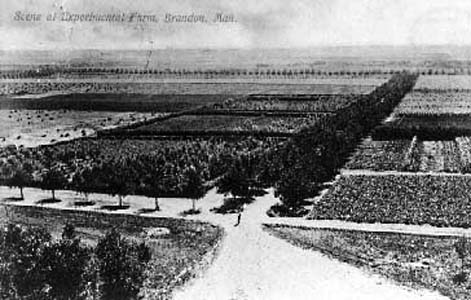Search | Image Archive | Reference | Communities | POV | Lesson Plans | Credits
 The development of effective dry-land farming techniques was a co-operative enterprise which involved individual farmers and agronomists, agricultural institutes and societies, provincial agricultural colleges, and the federal government. One of the principal contributions of the federal government was the establishment of the Dominion Experimental Farms at Ottawa, Indian Head and Brandon.
The development of effective dry-land farming techniques was a co-operative enterprise which involved individual farmers and agronomists, agricultural institutes and societies, provincial agricultural colleges, and the federal government. One of the principal contributions of the federal government was the establishment of the Dominion Experimental Farms at Ottawa, Indian Head and Brandon.
Pressure to establish a federal agricultural education service had existed since the mid-nineteenth century. Not only were most recent immigrants from Europe ill-equipped to deal with the problems of Canadian agriculture, but agricultural methods common in Ontario also proved inadequate to the challenge of farming the semi-arid regions of the prairies.
In 1885, the government committed itself to the establishment of Dominion Experimental Farms in five provinces, and in 1887, one such farm was established at Brandon.
Agronomists at these farms conducted a great many experiments related to dry farming. Comparisons of seed varieties were made in real-world circumstances and methods for summer fallowing, bluestoning and seed drilling were all tested and refined.
Once methods had been proven, the experimental farmers assumed a central role in publicizing them. Large numbers of pamphlets on seed selection, ploughing and weed and disease control were distributed, tours offered of the farm facilities, and letters and inquiries from farmers were diligently answered by the research scientists.
The Brandon Farm was just one of a network of experimental farms and field stations, which included a second Dominion Experimantal Farm at Morden and and experimental and demonstration farms operated by the Manitoba government Agricultural Extension Services and the Manitoba Agricultural College.
Page revised: 29 August 2009